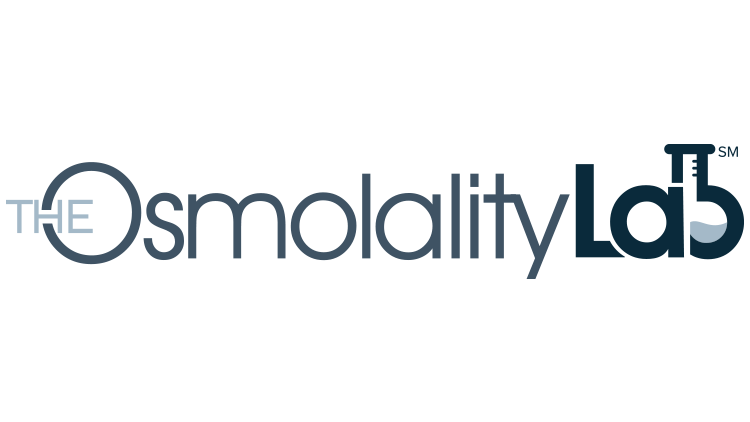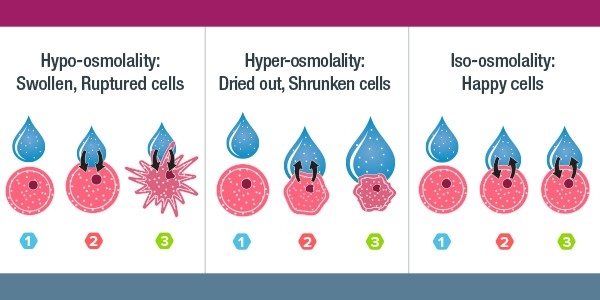Promotional Features
Osmolality Testing: Science-Empowered Marketing
Whether for face or body -- any product needs osmolality testing to ensure the consumer’s expectation of hydration is met.
Hydration makes us feel good, refreshed – internally and externally. Further, proper hydration promotes well-being, as well as healthy aging. People tend to now equate “hydration” with “health.” Consumers are investing in more skin care products to keep visible signs of aging at bay – and are attracted to claims of “moisturizing,” and “hydrating.”
The global market for skin care products was estimated to approach nearly $135 billion in 2018, according to market data from Grandview Research (March 2019), and face creams held the largest market share, followed by body lotions. The firm noted that growth will be fueled by “technological and product innovations,” and further, that hydrating skin care products will see increased consumer demand.
Already, cosmetic companies are looking to the tools wielded by scientists to distinguish their claims as compelling and justifiable. In its May 2016 cover story, “Making cosmetic claims that stick,” Chemical & Engineering News highlighted the cosmetics industry’s increasing efforts to “develop the ingredients and then back up the claims” as “armies of scientists work in the background for raw material suppliers and cosmetic companies.” John Bailey, chief scientist at the Personal Care Products Council, commended cosmetic companies that employ scientists who conduct high-level research and incorporate their discoveries into product development and marketing. “They do have an obligation to have the science to back up the claims there are making,” he asserted .
Defining Osmolality
Underneath the surface of any hydration claim lies the property of osmolality.
Technically, osmolality is the concentration of a liquid or viscous solution described as total number of solute particles (osmoles) per kilogram of solvent. In short, osmolality reflects the concentration of particles that are dissolved in a fluid.
The Osmolality Equation Osmolality is expressed in mOsm/kg H₂O. One milliosmol (mOsm) is 10-3 osmols. The osmolality equation is: Osmolality = ΦnC = osmol/kg H2O Φ = osmotic coefficient, which accounts for the degree of molecular dissociation |
When solute particles are added to a pure solvent (i.e., water), they alter the resulting profile of the solution, affecting such characteristics as freezing point, boiling point, vapor pressure and osmotic pressure. It is important to know that the change in these characteristics are not proportional to weight, size or shape of the added solute particles – necessitating osmolality to more precisely identify the concentration of solutes.
Importance of Osmolality
When consumers use a hydrating facial cream, for example, they are expecting that the actives are absorbed to nourish the skin as well as that it will “hydrate,” meaning that it will maintain an equilibrium of water content in the cells of the epidermal layers. This provides the “dewy,” “fresh,” and “supple” look and feel they desire – and expect -- from the product. Osmolality determines whether or not water flows into and out of these cells – and ultimately, if the product delivers on its various hydration and absorption claims.
3 States of Osmolality
|
Why Test for Osmolality
Osmolality testing and certification allows for your brand to engage in science-empowered marketing, growing opportunities to create loyal users. Osmolality testing will strengthen and support your claims of “rehydration,” “absorption,” “moisturization” and “hydration.” Products that have optimized osmolality may deliver the value and benefit of enhanced moisturization more quickly than those that don’t. This testing is suitable for any water-based topical including gels, creams, ointments and serums.
Therefore, it makes sense that face and body care products that claim hydration would benefit from osmolality testing, especially by GLP-compliant experts.
When you can test a sample of your product before going to market to ensure the product performs as claimed, it may have a greater chance of engendering consumer trial and loyalty. Some products, after osmolality testing and analysis, have gone back for reformulation tweaks due to showing either hypo-osmolar or hyper-osmolar results.
Osmolality is commonly measured by freezing point and vapor pressure methodologies. GLP compliant labs may use USP 785 or internally validated methods.
According to J. Scott Dalton, Operations Director for The Osmolality Lab (Pleasant Grove, UT), a leading GLP-compliant specialist in osmolality research, testing and analysis, “Products that meet The Osmolality Lab Certification Program’s strict testing and evaluation criteria are awarded the distinctive Osmo Lab Certified mark. This mark, emblazoned on product labels and promotional materials, can enhance a manufacturer’s competitive position and brand recognition by emphasizing their commitment to higher quality and transparent practices.”
To increase the volume of future sales – it is highly recommended to have your face or body product tested for osmolality. The process, says Dalton, is simple and effective. Fill out the online contact form, and you will receive instructions on how to submit your sample.
When investing time and money in all facets of launching or refining a face/body care product with hydration or moisturizing claims, validating that the product does indeed preserve hydration in the skin opens the door for science-empowered marketing. Hydrations claims, shelf-life, and stability will benefit from routine osmolality testing. When you pass the test, you begin to build consumer trust and loyalty.
Whether your face and body care product or line is in early stage development or well established, conducting osmolality testing will help put your best face forward in the growing cosmetics marketplace.


